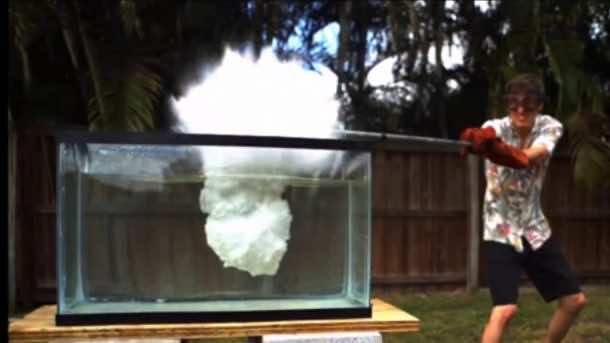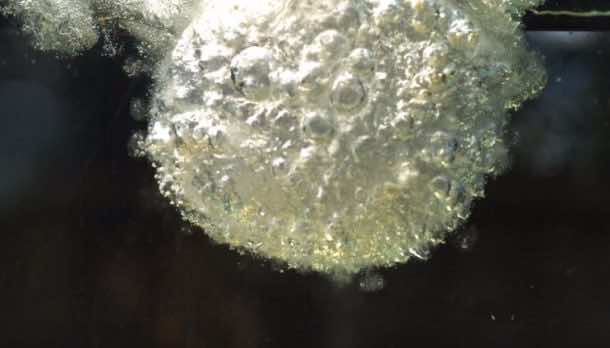A YouTuber thought he would try adding molten salt to his aquarium to see what happens. The massive explosion and the mess it created will leave him shoving off shards of the fish tank from his backyard for days.
The BackyardScientist is well-known for his insanely crazy yet incredibly fascinating experiments usually involving very high temperatures and molten metals. The video blogger has filmed exciting and sensational experiments detailing the fate of a pumpkin cooled with liquid nitrogen as molten aluminium is poured into it and testing the validity of the hypothesis that hotter objects fall faster through the water.

The latest video of the YouTuber explores the curious question of what happens when molten salt is put into water. The result was not merely interesting; it was explosive, quite literally! Soon as the molten salt came in contact with the water surface, it resulted in a massive explosion so forceful that the fish tank was destroyed immediately.
Witness the huge explosion for yourself in this video:
Molten salt refers to the table salt, i.e. Sodium Chloride or NaCl, heated up to 500 to 1000 Fahrenheit so as to convert it into the molten form. Molten salt is used in some industrial applications as a solvent and, being an electric and heat conductor, can also be utilised for the construction of the fuel cells.
A heated debated ensued after the intriguing video to determine the reason for this strange phenomenon. One of the theories purports that the rapid diffusion of the molten table salt created vapour explosions followed by another explosion of much larger magnitude resulting the demolition of the fish tank.

Robert C. Reid was reasonably fascinated by the video and carried out another test by pouring molten Borax into water. However, the results depicted by NaCl were not replicated. Detailing the phenomenon in his paper, Reid concluded that the cause of this gaseous eruption can be attributed to various factors.
The most likely theory suggests that the explosion was a result of instant heat transfer from molten salt to the cold water while another hypothesis explores the notion that the gaseous blast could be a result of the surface tension being overcome by the forces in the molten salt leading to creation water jets inside the salt mass. The final eruption, in this case, could have been caused by rapid vapourisation due to expansion.


